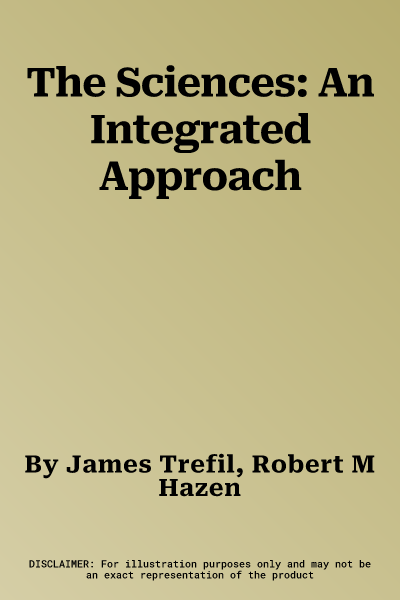The Sciences: An Integrated Approach, 9th Edition by James Trefil
and Robert Hazen recognizes that science forms a seamless web of
knowledge about the universe. This text fully integrates physics,
chemistry, astronomy, Earth sciences, and biology and emphasizes general
principles and their application to real world situations. The goal of
the text is to help students achieve scientific literacy. Applauded by
students and instructors for its easy-to-read style and detail
appropriate for non-science majors, the ninth edition has been updated
to bring the most up-to-date coverage to the students in all areas of
science, with increased emphasis on climate change, sustainability,
viruses and public health, and an extensively updated chapter on the
importance of bioengineering.
FEATURES INCLUDE:
The Science of Life - To help show the interdisciplinary nature of
the many concepts introduced in the text, sections on living things are
included in most chapters. The chapters that emphasize principles
specifically related to life are at the end of the book, but the
biological examples appear throughout.
The Ongoing Process of Science - Science is a never-ending process
of asking questions and seeking answers. In these features, some of the
most exciting questions currently being addressed by scientists are
examined.
**Mathematical Equations and Worked Examples -**Whenever an equation is
introduced, it is presented in three steps: first as a sentence, second
as a word equation, and finally in its traditional symbolic form. In
this way, students can focus on the meaning rather than the abstraction
of the mathematics. An appendix on English and SI units is also
included.
Science by the Numbers - To help students understand the importance
of simple mathematical calculations in areas of magnitude, several
nontraditional calculations have been incorporated. For example, how
much solid waste is generated in the United States, how long it would
take to erode a mountain, and how many people were required to build
Stonehenge.
Great Ideas and Great Ideas Concept - Each chapter begins with a
statement of a great unifying idea or theme in science and a concept map
so that students immediately grasp the chief concept of the chapter and
how the idea relates to the different branches of science. These
statements are intended to provide a framework for placing everyday
experiences into a broad context.
Stop and Think! Questions challenge students to think critically
about the implications of a scientific discovery or principle.
Resources for Instructors and Students including practice quizzes,
flashcards, lecture slides, an instructor's manual, images and tables
from the book, a test bank, and much more!

